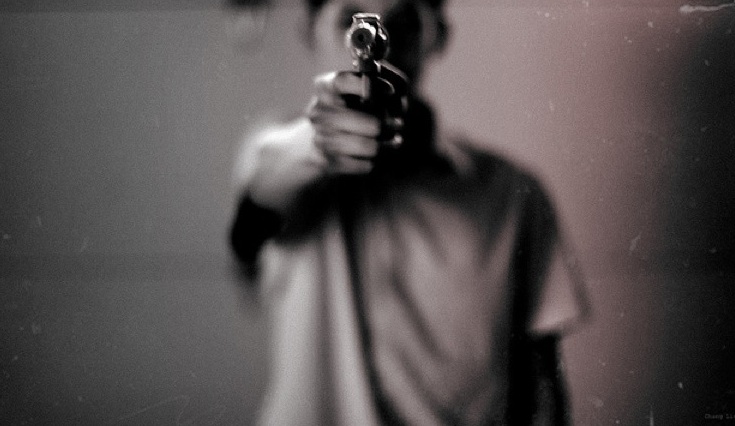I was one of the television reporters on the scene of Oregon’s first mass shooting, May 21, 1998. When Kip Kinkel opened fire in a lunchroom full of his fellow classmates, many of the students thought the sounds of gunfire was a joke or they would have ducked for cover sooner.
I’ll never forget the ashen faces of young people standing in shocked silence outside the police line, dressed in the uniform of youth, jeans, t-shirts, hoodies. Two of the girls I interviewed still had blood spatters on their tops.
Kinkel, who’d also murdered his parents the night before, loaded and unloaded the three weapons he’d brought with him, a .22 caliber rifle, a .22 caliber handgun and a 9mm Glock automatic pistol. “He just kept shooting,” one of the girls said. “The sound is still ringing in my ears.”
By the time Kinkel was finished, two were dead, twenty-five students were seriously wounded. “Jake finally stopped him,” the student told me. “After Kip shot Jake, Jake must have thought, what the hell, we’re all going to die anyway.” The girl pushed her shoe in the mud.
I thought I’d witnessed the worst trauma our state could endure. Not even close. In October, nine people were killed and seven more seriously wounded in another campus horror. It’s the 296th mass shooting in America in 274 days. Columbine followed Springfield, Virginia Tech followed Columbine, Sandy Hook followed the Colorado theater shooting. Keeping track of the horror is a mind-boggling exercise.
When you read the descriptions of the history of mass shooters in America, you recognize one thing immediately. They are all male. They are young when they shoot up schools and middle-aged when they shoot up their offices. They are obsessed by guns and in various states of psychological unraveling. They are described as loners, and they are often known to their friends and families as being “in trouble.”
Access to mental health treatment in America is like running the gauntlet of the worst kind of bureaucracy. Services are fractured. There are far too few psychologists and psychiatrists, especially in rural areas, where mass shootings tend to occur more frequently. Treatment is often prescribed in the form of anti-depressants, which can induce mania and ideation in young people.
And yet, access to guns is easy. It’s as simple as buying on the internet or buying from a gun show dealer who is exempted from conducting a private background check. Angry callers on talk radio shouted, “If only we allowed all students to be armed.” They maintain that the mass shooting problem will be solved with more guns. There are 310 million guns in America and 11. 1 million people carry a concealed weapon legally. Yet, the number of mass shootings stopped by an armed civilian in the past thirty years is one, a documented account of an Uber driver who stopped a passenger from opening fire on a crowd in Chicago. http://www.businessinsider.com/uber-driver-with-concealed-handgun-prevents-mass-shooting-in-chicago-2015-4
The other numerous events sent to me for review are not verifiable.
Owning a gun has been linked to higher risks of homicide, suicide and accidental death by gun. For every time a gun is used in self-defense, there are 7 assaults or murders, 11 suicide attempts, and 4 accidents involving guns in or around the home. These are not made up statistics. The Centers for Disease Control is non-biased, evidence-based and gathers data only from verified sources.
Responsible gun owners, what is your solution? You must look at these mass shootings with the same concern for your children that I have for mine. Can we have a real conversation about gun violence in America? Could we at least agree that the parents of deeply troubled young men shouldn’t be buying more guns to fuel the obsession? Could we agree on safer storage methods? No? What then? Is there a dialogue we can have and change we can make that doesn’t end in more violence?
Four years ago, my daughter and I were talking about terrorism and the various measures America had taken to make itself safer. “I’m not afraid of terrorism,” she said, looking out the window. “I’m afraid of being shot at school.”
